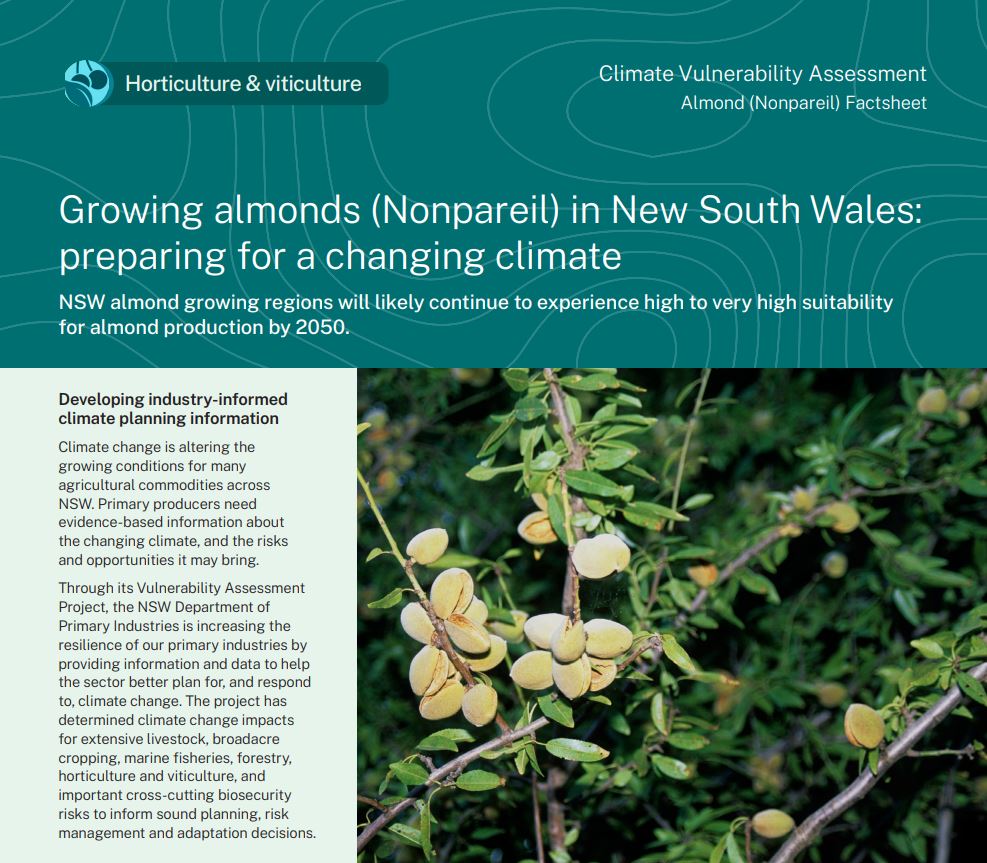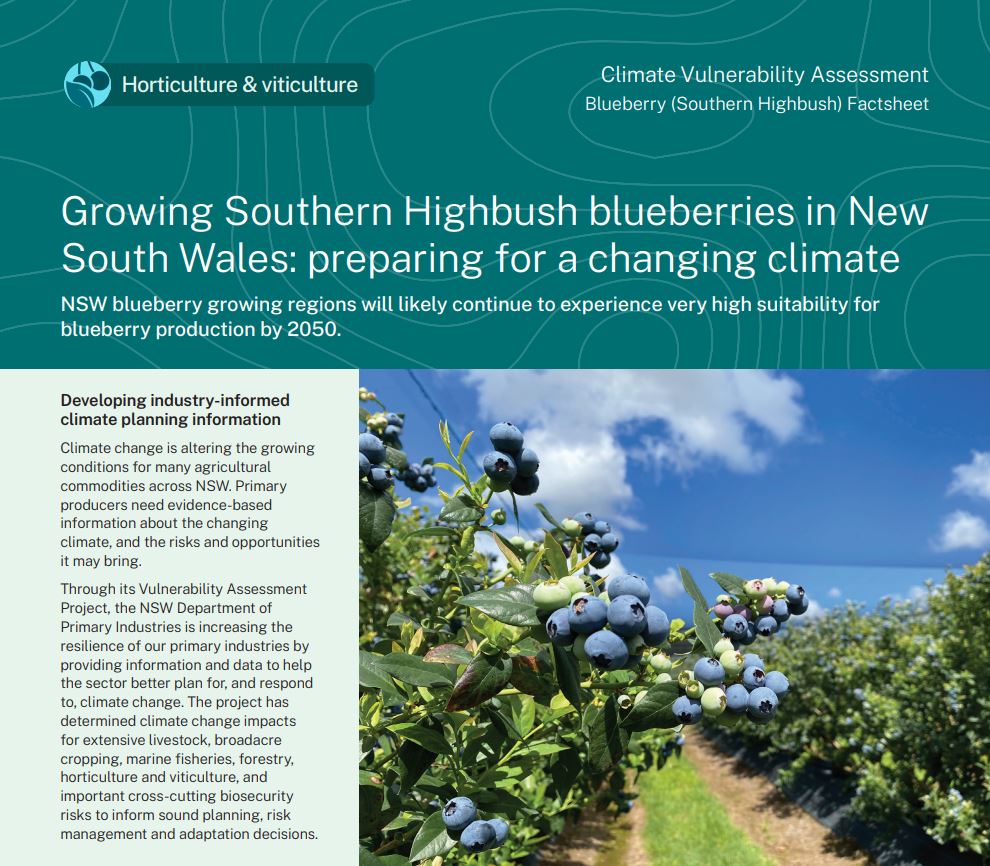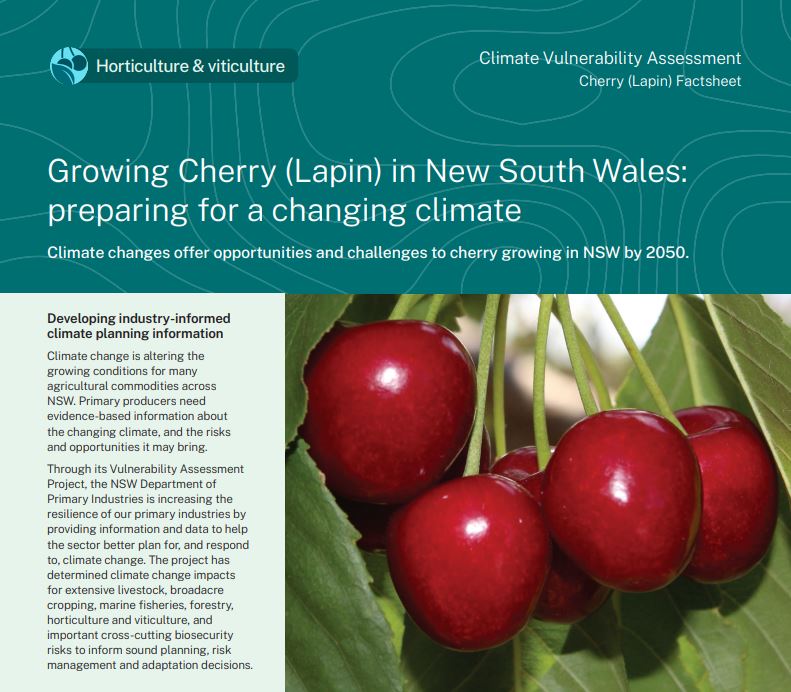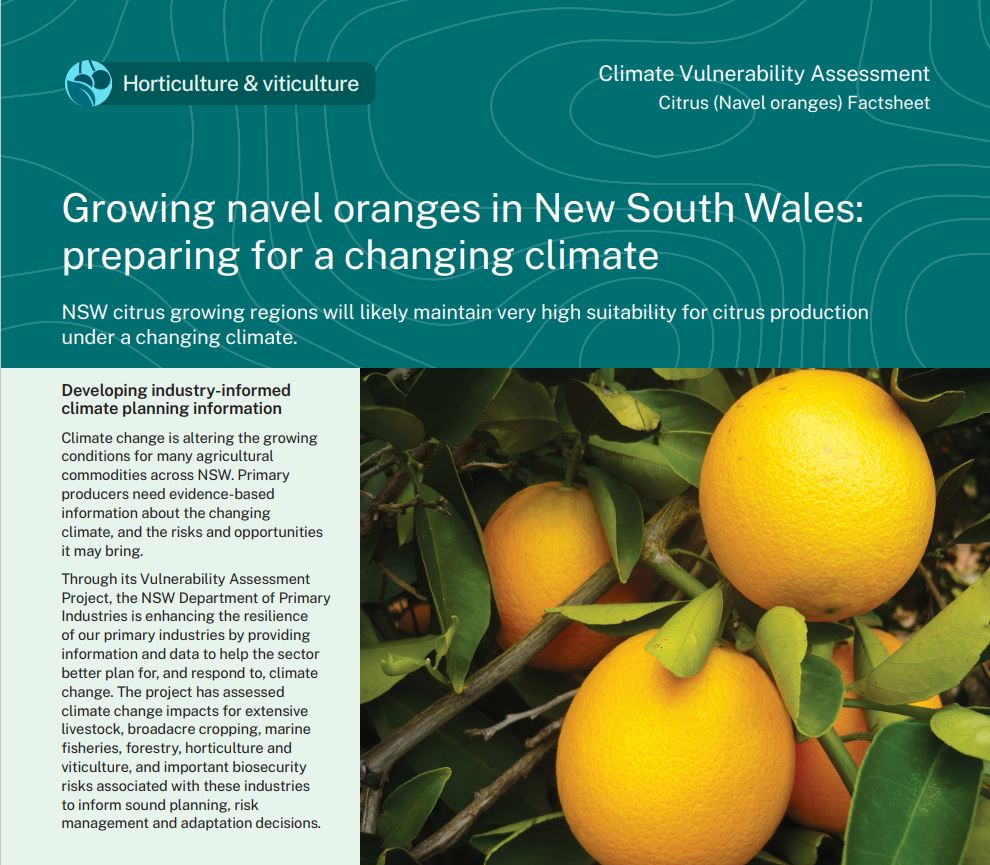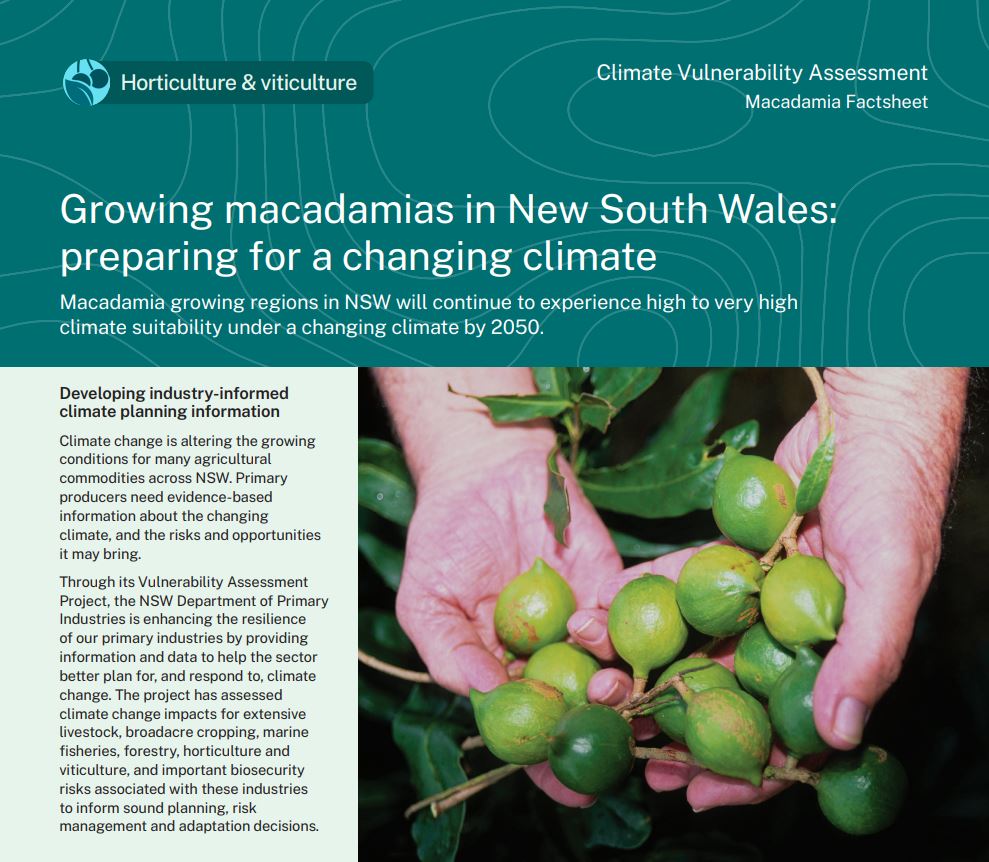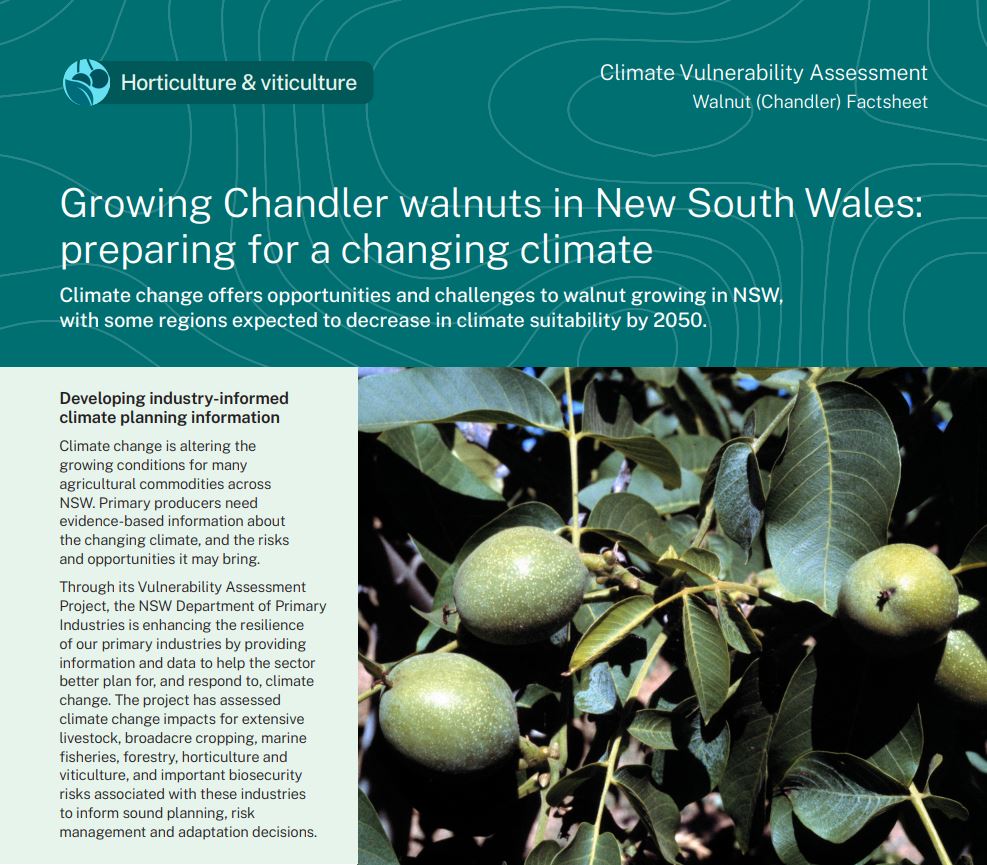Climate Vulnerability Assessments
For horticulture and viticulture, the selected commodities were:
Results
The Climate Vulnerability Assessment assessed the historical and future climate suitability for each commodity across NSW. These assessments considered the change in suitability between the historical (1981-2010) and future time periods (2036-2065), reported separately for the two emissions scenarios.
Maps of historical and future climate suitability for horticultural commodities were produced to demonstrate where in the state a commodity is likely to thrive or else be limited by future climatic conditions. The maps are not provided on these webpages but can be found in the Climate Vulnerability Assessment Summary Report. The factsheets below provide the results by discussing the important impacts and providing interpretation of the drivers of changed suitability.
Care should be taken when interpreting these results. The Climate Vulnerability Assessment is intended to highlight potential changes in future climate suitability at industry and regional levels. It should not be interpreted at the scale of individual holdings.
Due to the large number of outputs, not all results have been provided at this stage but will appear in individual commodity results reports. Commodity results reports will be released in 2024. Register your interest in receiving a copy by contacting vulnerability.assessment@dpi.nsw.gov.au.
Factsheets
Chardonnay cool climate factsheet
PDF, 4235.22 KB
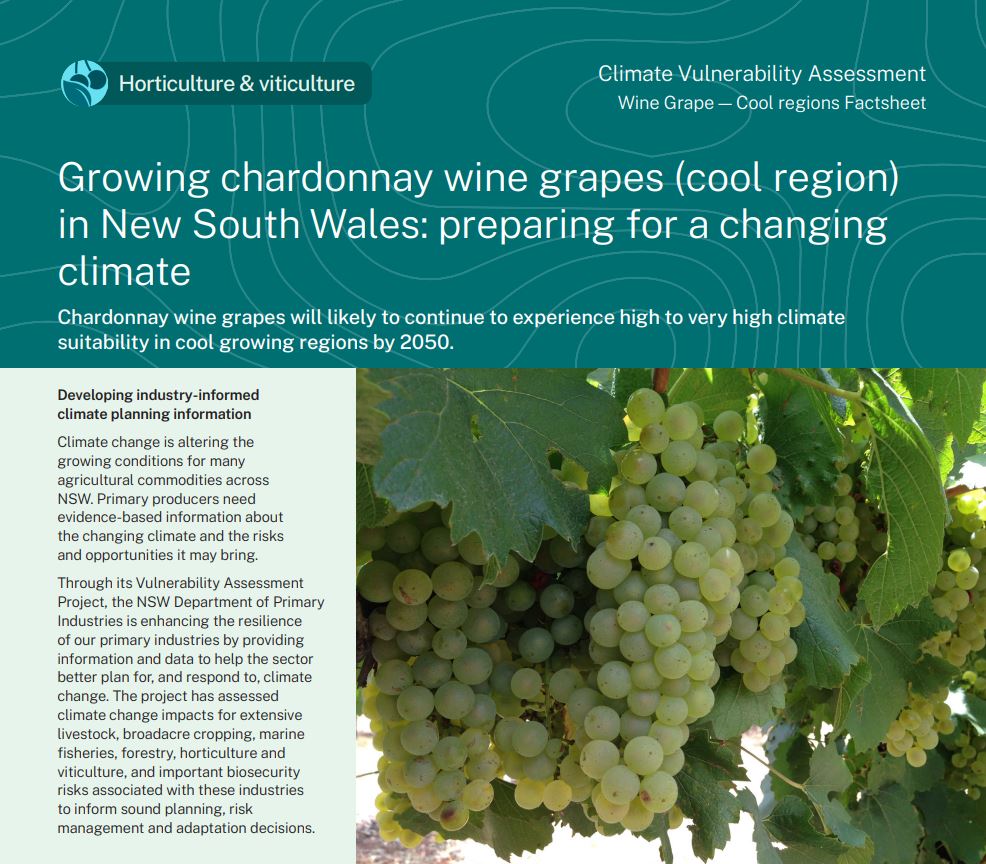
Chardonnay warm climate factsheet
PDF, 5817.27 KB
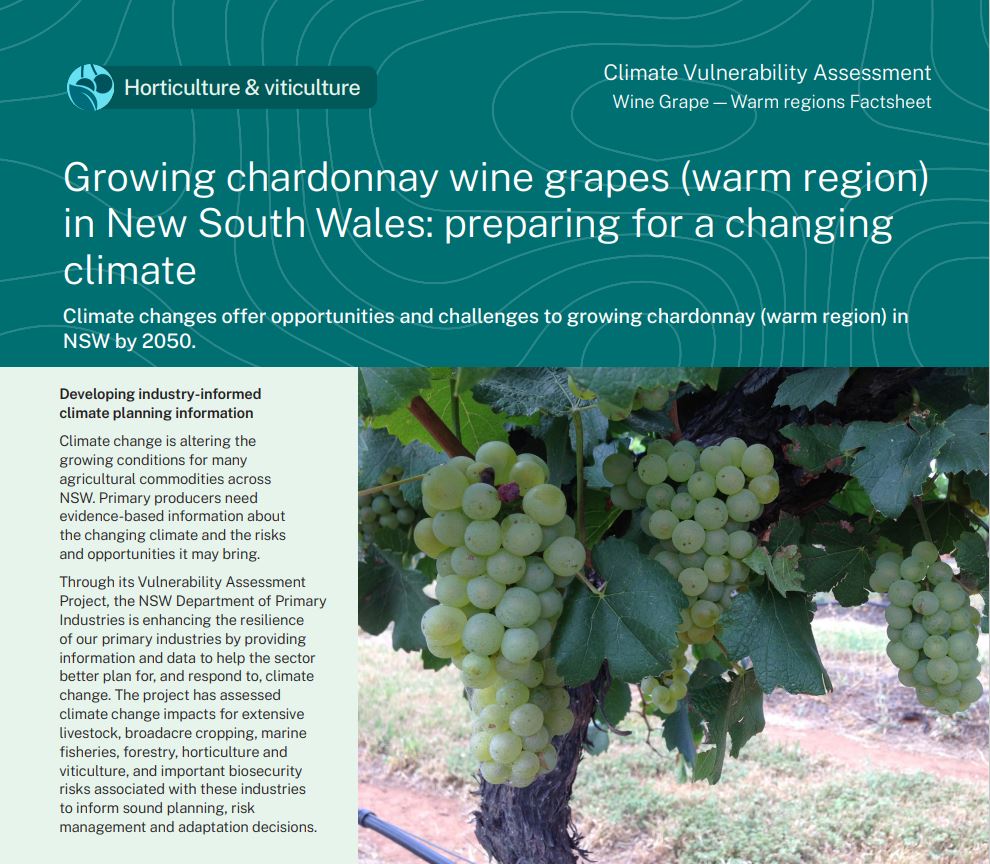
Approach
The Climate Vulnerability Assessment required a modelling approach that could be rapidly and consistently applied to different commodities and biosecurity risks to produce consistent and comparable models. To this end, a framework was developed which combined research literature, expert industry knowledge and climate data in a modelling approach known as ‘multi-criteria analysis’ (MCA model). The resulting MCA models were used to evaluate the suitability of NSW’s climate for chosen commodities and biosecurity risks.
The general assumptions for horticulture and viticulture MCA models were:
- a specific variety is described (for example, Lapin for cherries),
- the crop trees or vines were at maturity,
- a specific yield was produced in t/ha per year,
- best practice management is undertaken,
- the crop is not grown under protective netting or covers,
- the crop is free of pests and diseases,
- pollination takes place,
- dates of phenophases for each commodity are fixed and
- irrigated crops were adequately irrigated.
For more information on the methodology and data used in the climate vulnerability assessments, please refer to either the methodology summary page or for an in-depth explanation, the Climate Vulnerability Assessment Methodology Report.
References
Hort Innovation (2023) Australian Horticulture Statistics Handbook 2021/22 (version 1.2), Horticulture Innovation Australian Limited, accessed 28 September 2023.
NSW Department of Primary Industries (2023)Performance, Data & Key Insights 2022 Horticulture, NSW DPI, accessed 4 October 2023.
Wine Australia (2023) Australian Wine Sector at a glance, Wine Australia, accessed 29 September 2023.
